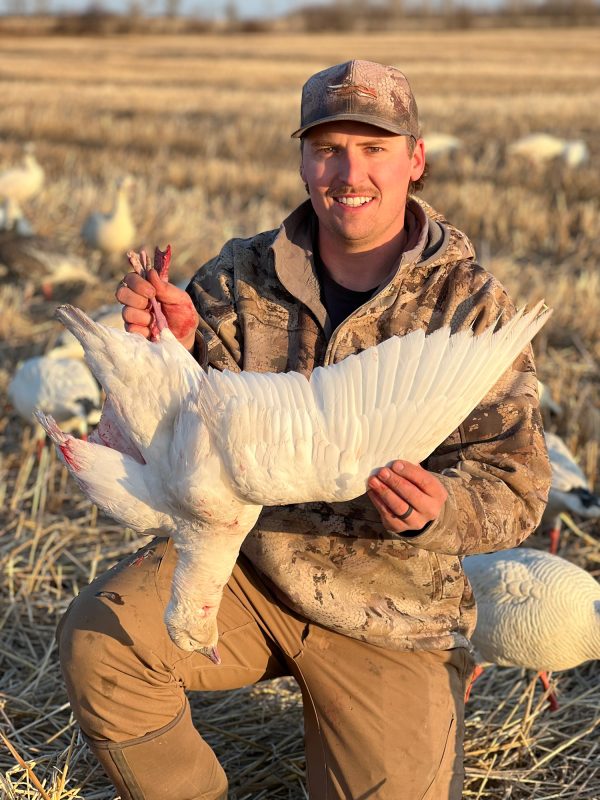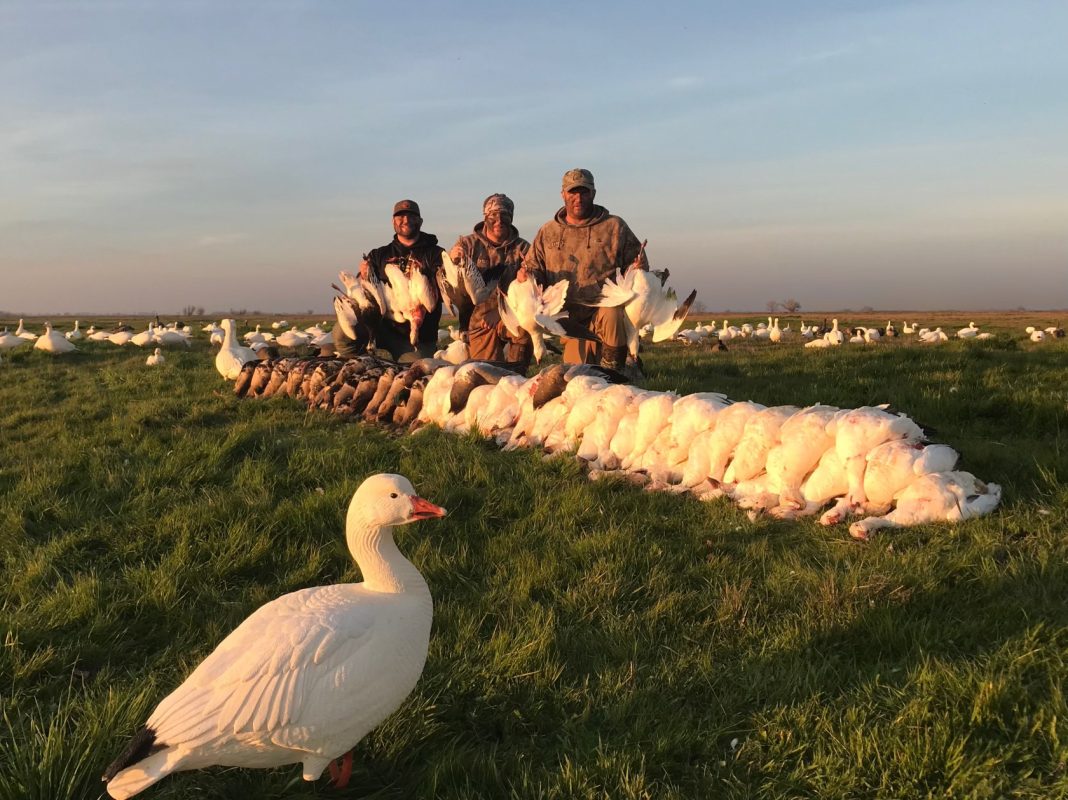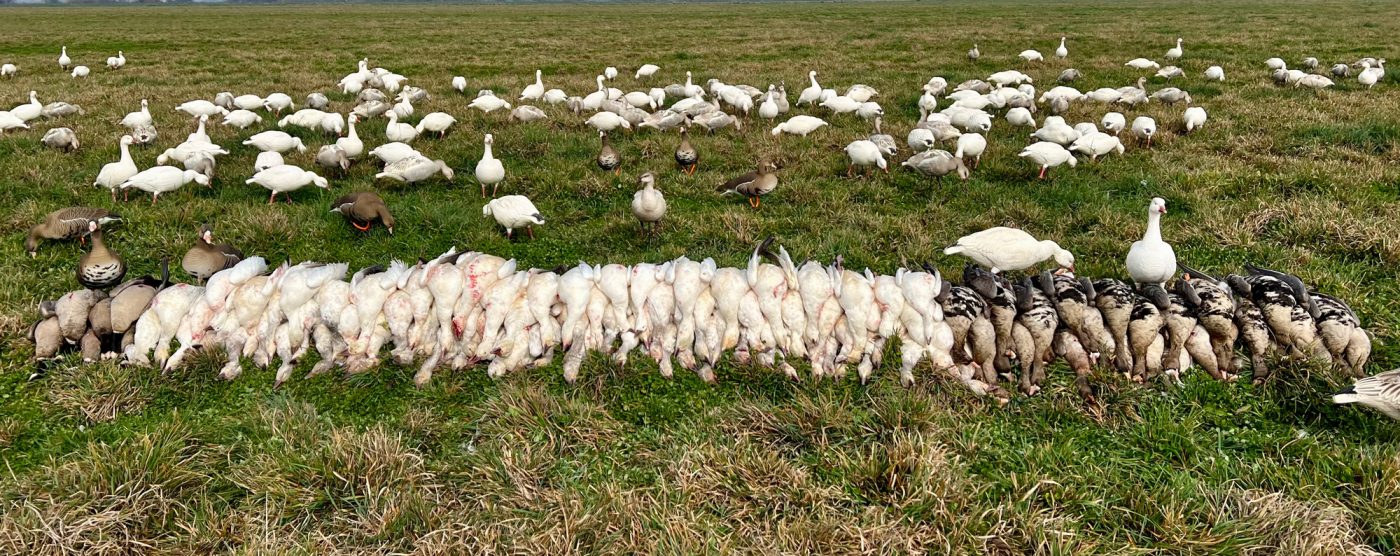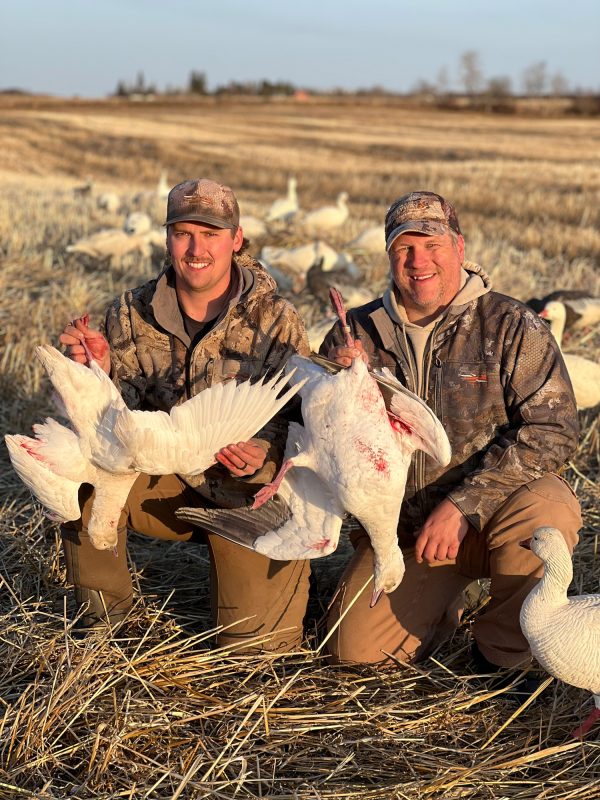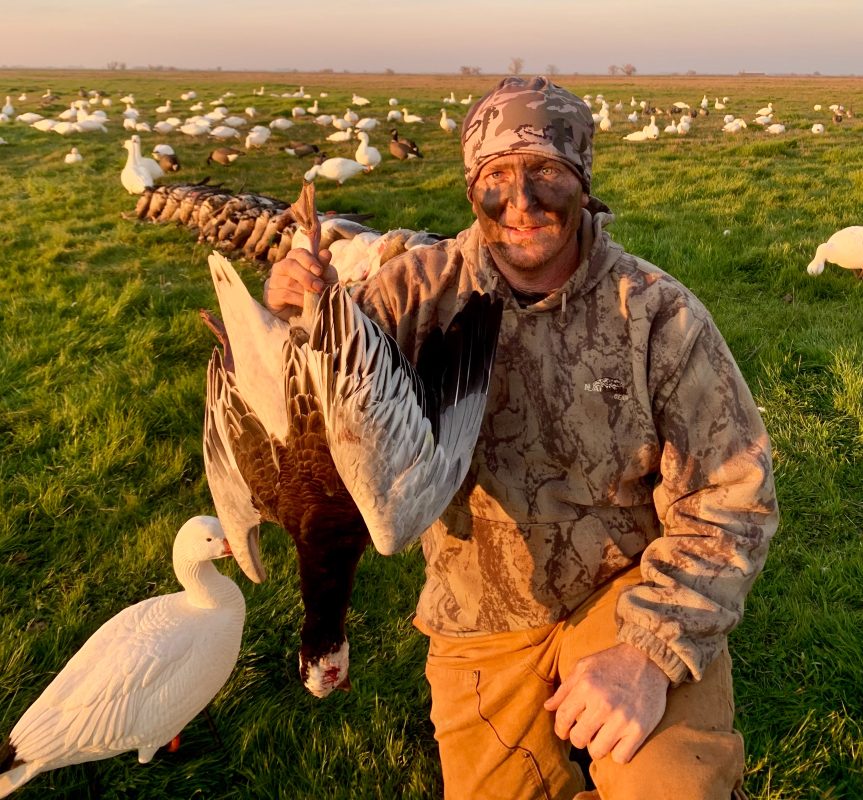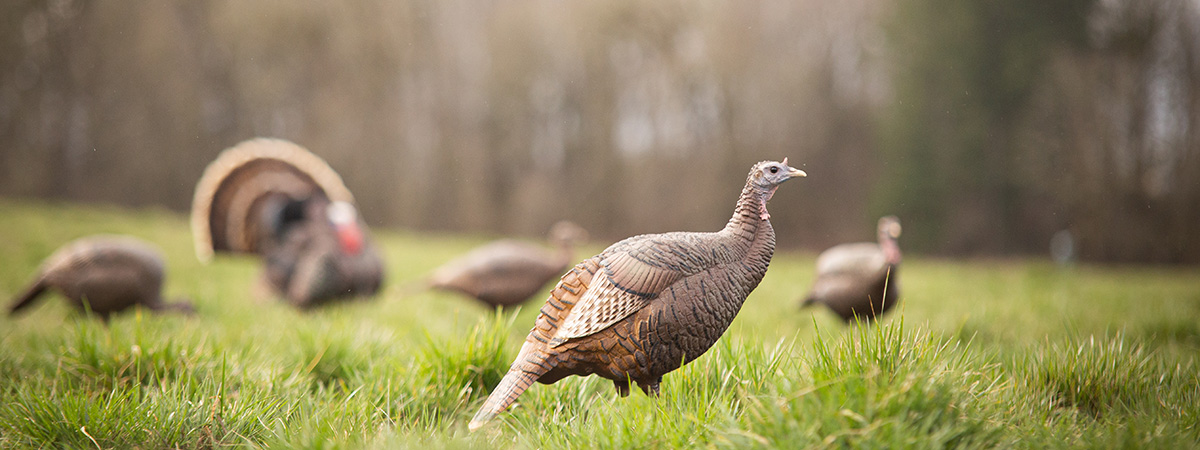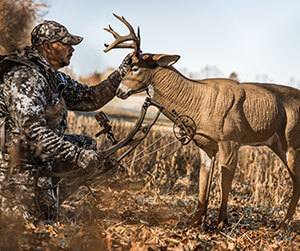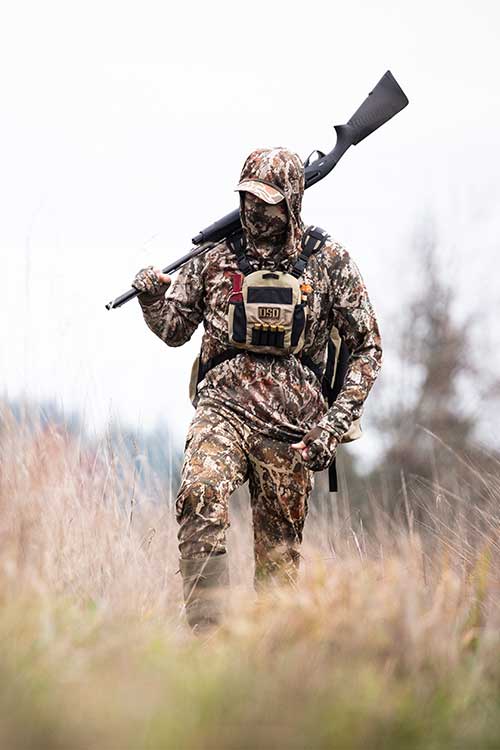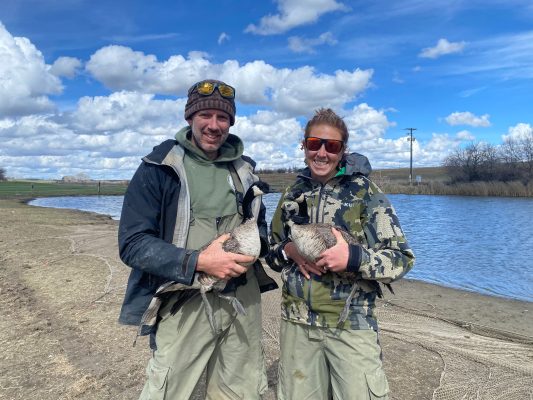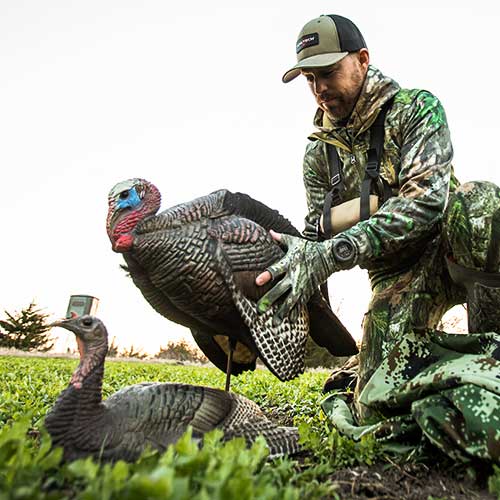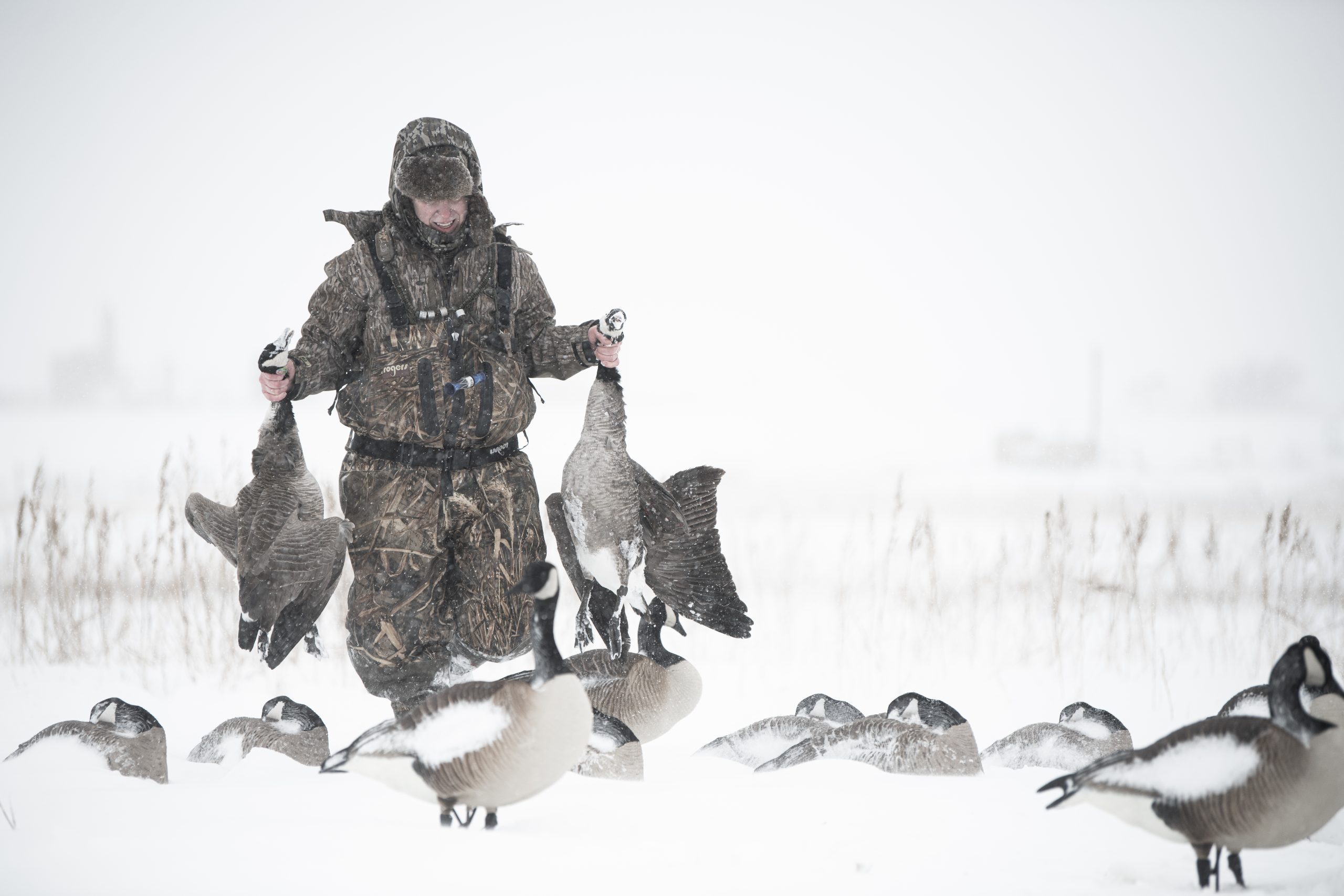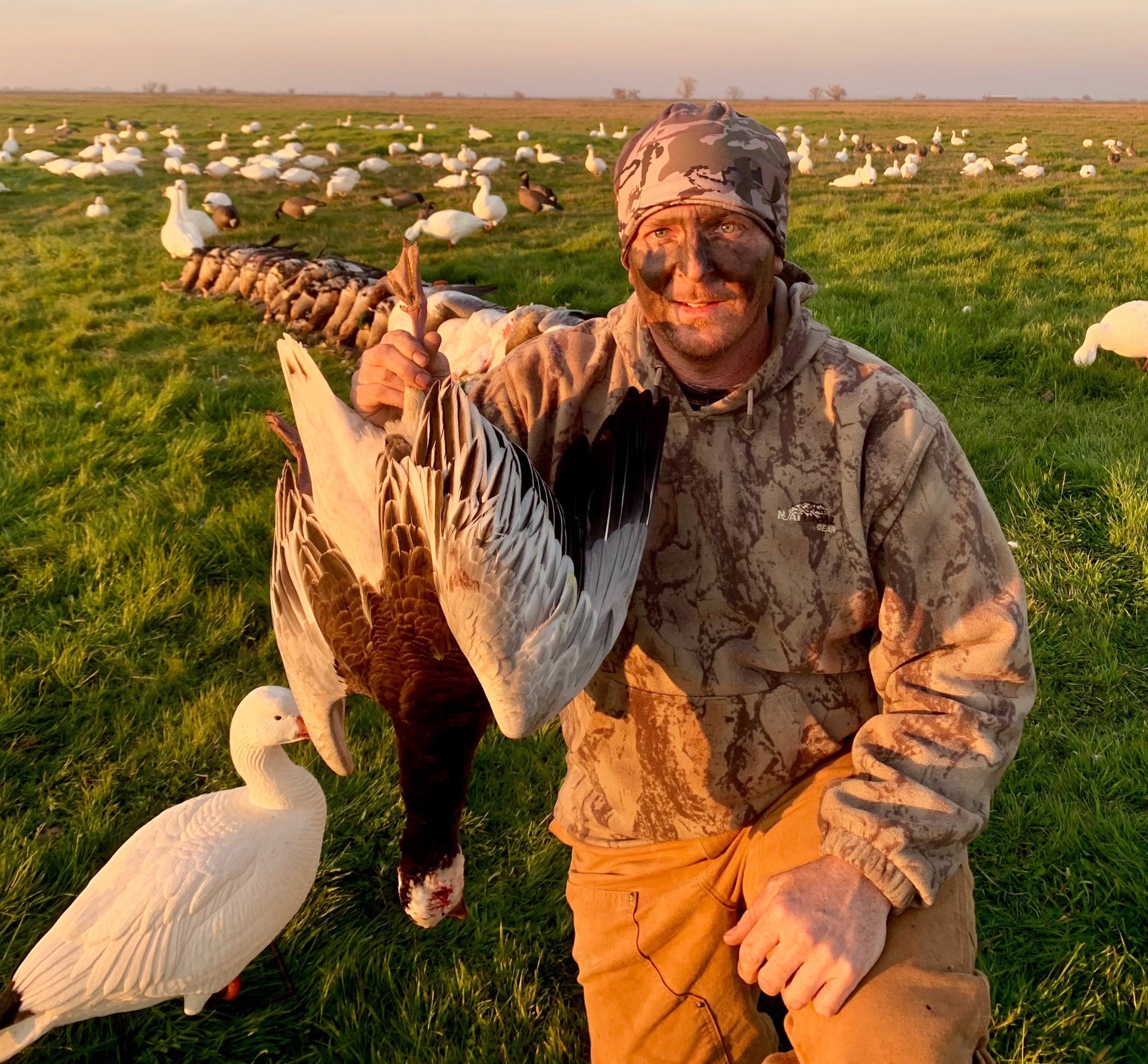
Written by: Brad Cochran
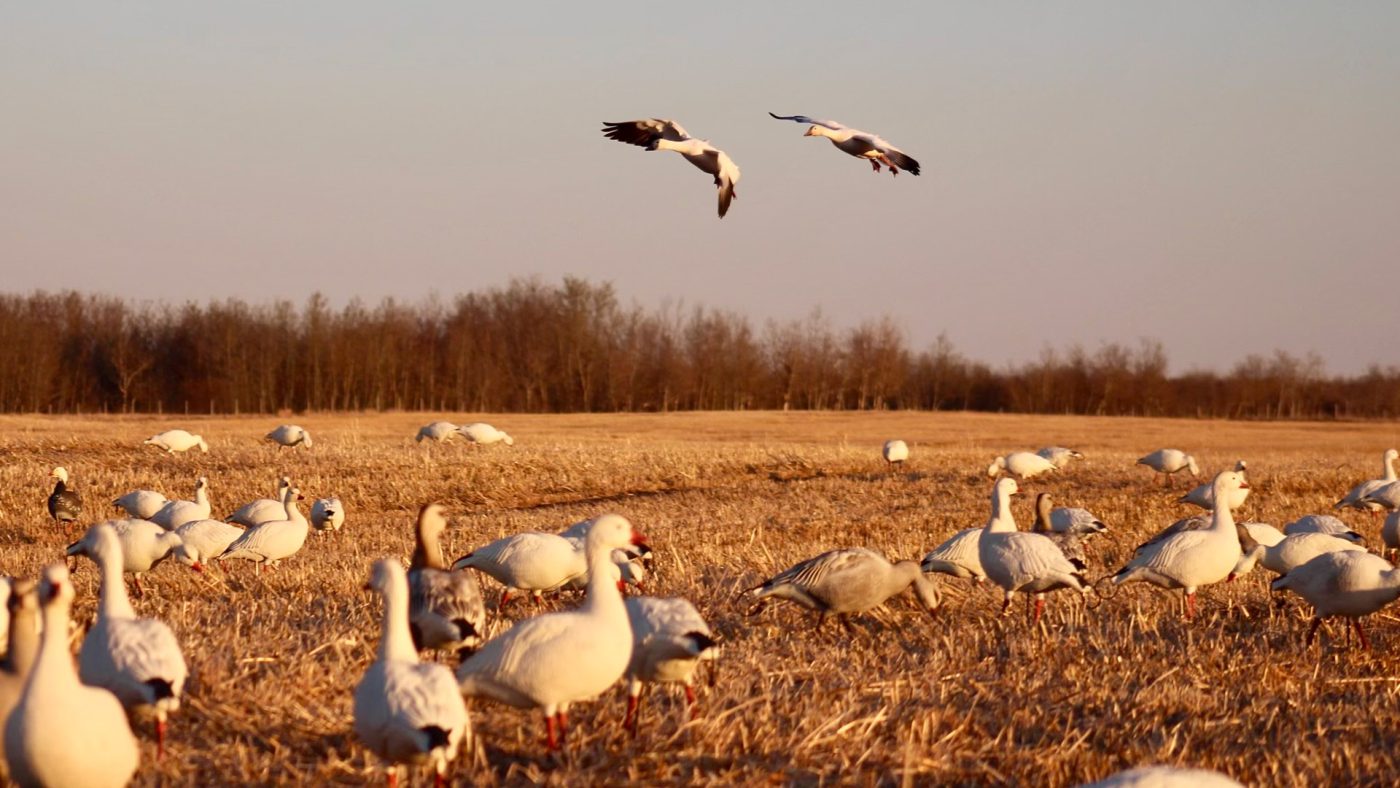
When the topic of decoying snow geese is brought up there is often much debate. You can ask a dozen different snow goose hunters how they like to do it and you might get a dozen different answers. After all, snow geese are hunted in all four flyways almost nonstop from late Summer through May. The guy hunting fresh Fall birds in Canada is probably doing things differently than the guy hunting Spring migrators down in the states. While the guy hunting stale birds at the bottom of the flyway has his own way. What works for one hunter might not work for another and we all have our own idea of what constitutes successful decoying. Some hunters are perfectly happy with taking shots at any birds within range whether they are committed or not. While others prefer to shoot them strictly feet down. As long as you are happy and taking ethical shots that is all that matters. For me personally, there is nothing like shooting snows that are fully committed. And while I don’t claim to know everything on the subject, I have learned a lot in nearly 30 years of chasing the white devils.
Like I said, I prefer to shoot snows when they are feet down. As an added challenge, I like to shoot adult birds. I’ve found that in order to consistently finish adults, my spread and hide have got to be on point. For decoys, I’ve had best results with full bodies. Though they are bulky, nothing fools mature snows like they do. And the more realistic the brand the better.
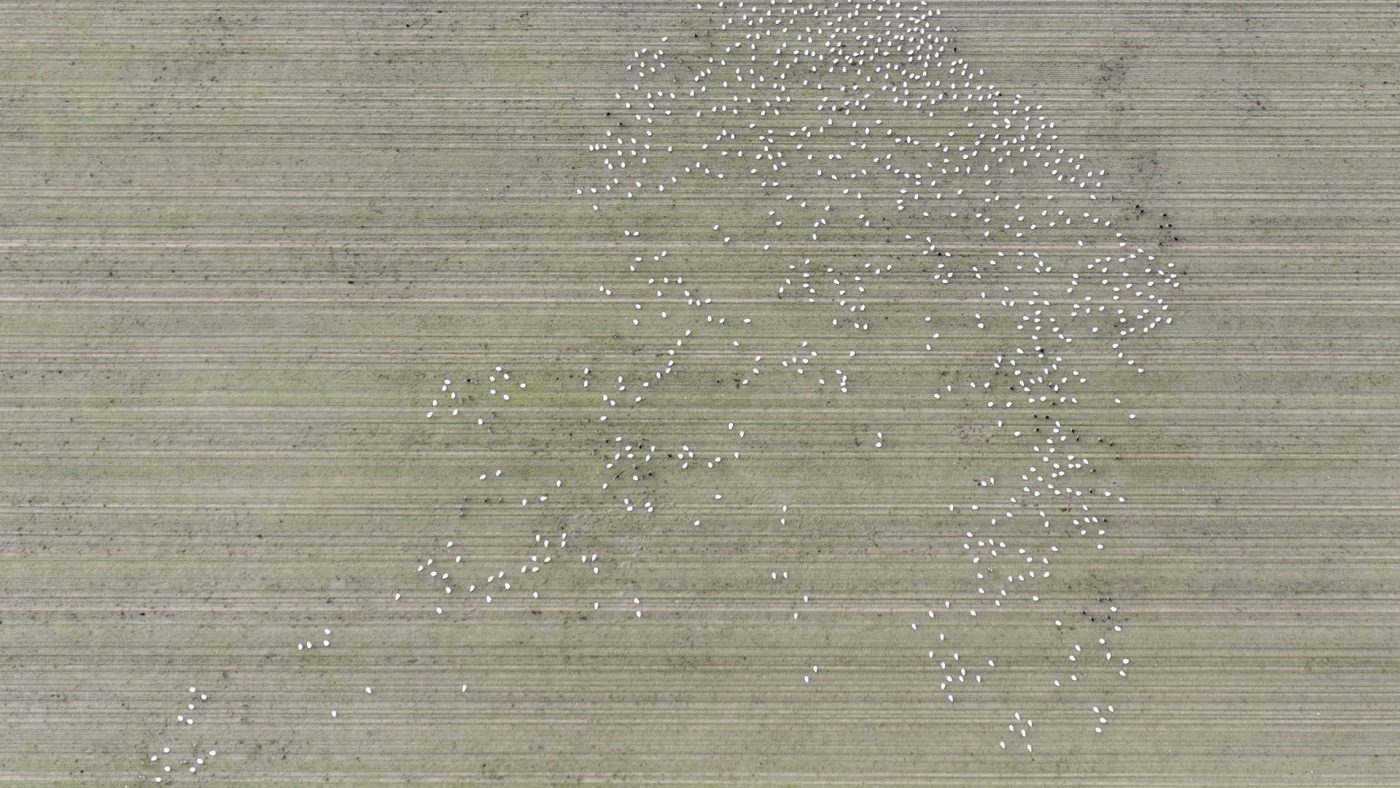
When it comes to setting my spread I try to look as natural as possible and let my own observations of live geese dictate what “natural” looks like. I observe snow goose behavior in the field and look at drone images of feeds so I can see what flocks of feeding snows look like from a bird’s eye view. Some of my big takeaways are that 1) Snow geese feed very tight together when there is an abundance of food (sometimes they are literally touching each other). 2) They spread out as food becomes scarce. 3) They face random directions without rhyme or reason. 4) Feeding flocks are frequently shifting to where the food is. As they devour the food in one spot, they move to another part of the field, often leaving birds behind as they hopscotch to the new food source. 5) Newly arriving birds almost always land in the dense pockets of feeding birds on the ground.
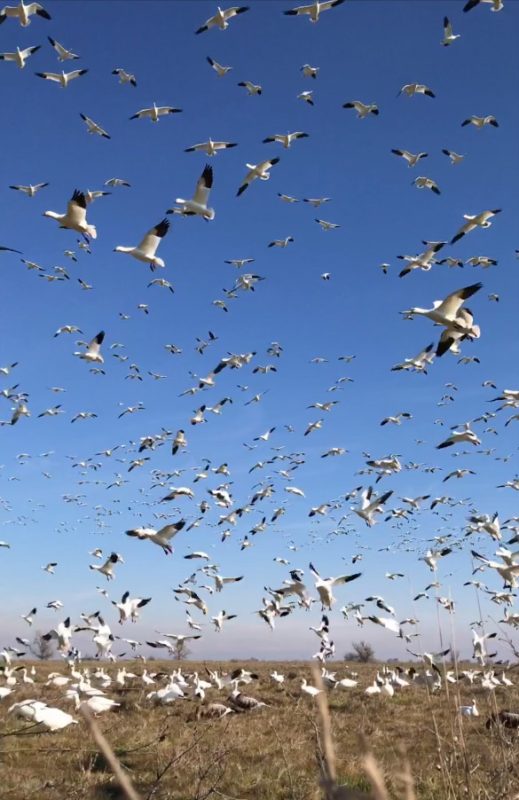
Knowing that decoying flocks are likely going to where they think the food is, I set about half of my decoys in a tight mass in front of the blinds. This is a great place to put your speakers if you run an e-caller. I break my remaining decoys into loose groups that get smaller as I get away from the mass. Sometimes I will run little groups out to 100+ yards depending on how many decoys I’m using that day. For the most part I face all of my decoys in random directions. Depending on the day and the conditions, I run anywhere from 100-400 decoys. And I like to run adult snows but I also add some juvies and blues when applicable.
When it comes to hiding I like to get my blinds away from my decoys. I’ve found that I get busted far less by doing this. 20-25 yards is a good average distance from my blind to my nearest decoy but it could be closer or farther based on wind and the quality of the hide. I like field edges but anywhere there is cover that is tall enough to hide the profile of the blinds will work.
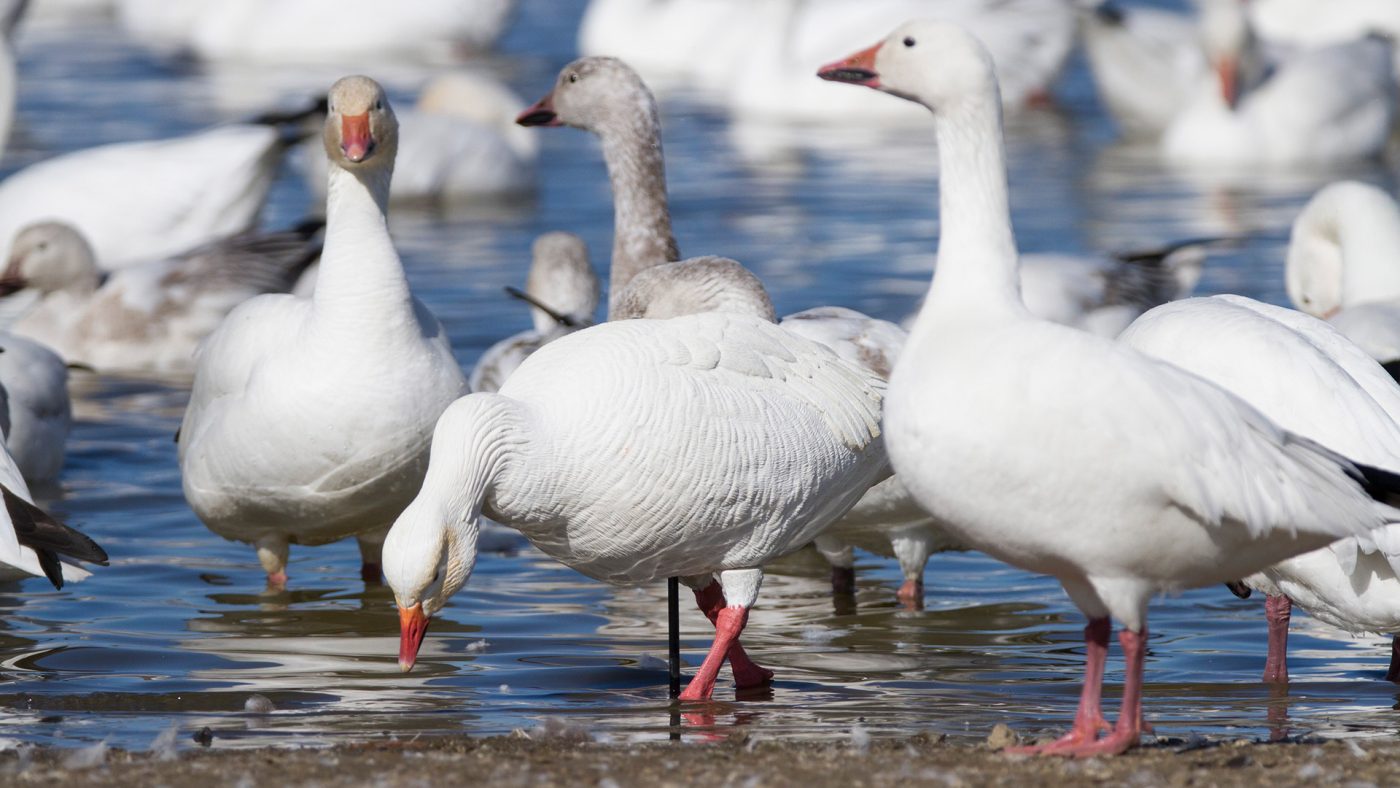
While fine tuning my spread and dialing in my hide have certainly helped me put more snows feet down in my decoys, it goes without saying that location comes first. Even the best decoys with the perfect e-caller track and a killer hide won’t get you anywhere if you aren’t in the right spot. Over time my opinion of an ideal location to set up for snows has shifted. In my early years I was all about getting on the biggest feed I could find. As waterfowlers I think we are naturally drawn to the big X. It’s hard to pull up to a quarter section that’s wall to wall with geese and not want to hunt it. And when the conditions are right I’ve had some epic shoots on massive feeds. But all too often I’ve been burned by them. Some days they don’t show up at all. Other days the birds come back, but after a few goes they start piling into another field. More often than not, the kiss of death. Nowadays when I hunt an X I prefer to set up on 2-5,000 birds, especially in nice weather. I’ve just had better results hunting the smaller feeds in most cases. But I also try not to overlook opportunities to run traffic between feeds. If you can get a strong wind at your back and your decoys where they are visible you can do some real damage on birds trading between fields.
There’s no one size fits all approach to decoying snows. Snow geese and snow goose hunting are constantly evolving and if we wish to be successful then we too must evolve our tactics. Trying to decoy snows can be the most frustrating form of waterfowling there is, hands down. But when it all comes together it doesn’t get any better than looking down your barrel at those big adults with their feet down.
